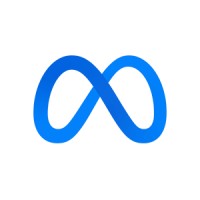
Meta Product Designer Behavioral Interview Template — Cross‑Functional Impact & Values
Purpose: Assess how a Product Designer operates in Meta’s fast, impact‑oriented culture across collaboration, decision‑making, velocity, and care for user safety at global scale. What this interview covers (aligned to Meta values: Move Fast; Focus on Long‑Term Impact; Build Awesome Things; Live in the Future; Be Direct and Respect Your Colleagues): 1) Impact Orientation at Scale: Ability to frame problems in terms of outcomes, metrics (e.g., retention, time‑to‑value, integrity KPIs), hypotheses, and measurable results for billions of users. 2) Speed and Iteration: Bias to ship, run experiments, de‑risk via prototypes, and make pragmatic trade‑offs (80/20) without sacrificing safety/privacy. 3) Cross‑Functional Collaboration: Influencing PM, Eng, Research, Data Science, and Content Design; navigating disagreement; aligning on PRDs/roadmaps; clear written and verbal communication. 4) User Safety, Privacy, and Integrity: Building for trust, accessibility, internationalization; considering abuse cases, community standards, and unintended consequences. 5) Product Sense + Execution Judgment (Behavioral lens): Prioritization under ambiguity, handling constraints, learning from failures, reflection and growth. Format (45 min): - 0–3: Rapport and role context; interviewer outlines focus areas and expectations. - 3–8: Candidate chooses a high‑impact project; clarifies problem, success metrics, constraints, team. - 8–33: Two behavioral deep dives using STAR; interviewer probes for decisions, trade‑offs, influence, and results (include safety/integrity and experiment learnings). - 33–40: Rapid fire follow‑ups/edge cases (e.g., global launch, outage, reorg, negative experiment result). - 40–45: Candidate Q&A (signals: curiosity about users, metrics, and collaboration norms). Sample prompts (choose 4–6): - Tell me about a time you had to move fast to ship a v1. How did you decide what to cut, what to measure, and how to manage risk? - Describe a disagreement with a PM or Eng about scope or timeline. How did you influence the decision and what was the outcome? - Share a project where your initial solution underperformed. What did the data/research show, and how did you pivot? - How have you designed for safety/integrity or misuse cases? What trade‑offs did you make between growth and trust? - Give an example of designing for a global audience (accessibility/localization). What changed in your design or rollout plan? - Tell me about tough critique you received. What did you do next and what changed in the product? Probing follow‑ups (used throughout): - What was the concrete metric and baseline? Target? Guardrails? Sample size/experiment duration? What would you do differently? - Where did you disagree and how did you surface it? What feedback did you give/receive, and how did you document decisions? - How did you validate assumptions pre‑build (prototype, usability, dogfood, A/B)? What risks remained at launch? Evaluation rubric (1–5 each; strong‑hire typically averages 4+): - Impact & Metrics: Defines success quantitatively; demonstrates measurable outcome; ties craft to results. - Collaboration & Influence: Works through conflict, aligns partners, earns trust; direct yet respectful communication. - Speed & Judgment: Iterates quickly, scopes MVPs, manages risk; knows when to slow down for safety/privacy. - User Empathy & Safety: Anticipates abuse/edge cases; designs for accessibility and global audiences. - Ownership & Growth Mindset: Clear personal contribution, introspection, learns from failures. Red flags: - Vague outcomes or inability to quantify impact. - Over‑indexing on polish over shipping/learning; dismissing research or data. - Blamey narratives; unclear ownership (“we” without specifics). - Ignores safety/privacy or community standards. - Can’t describe trade‑offs, constraints, or why a decision was made. Interviewer notes template (for structured feedback): - Problem context, goals, constraints (scale, safety, time). - Candidate actions and alternatives considered; partner dynamics. - Metrics, experiments, and results; what changed post‑critique. - Evidence for/against Meta values; final signal and level‑based calibration. Candidate questions that signal fit (optional at close): - How this team balances iteration speed with safety/privacy. - How designers partner with DS/UXR for decision‑making and post‑launch learning. - How success is measured for this role in the first 6–12 months.
45 minutes
Practice with our AI-powered interview system to improve your skills.
About This Interview
Interview Type
BEHAVIOURAL
Difficulty Level
4/5
Interview Tips
• Research the company thoroughly
• Practice common questions
• Prepare your STAR method responses
• Dress appropriately for the role